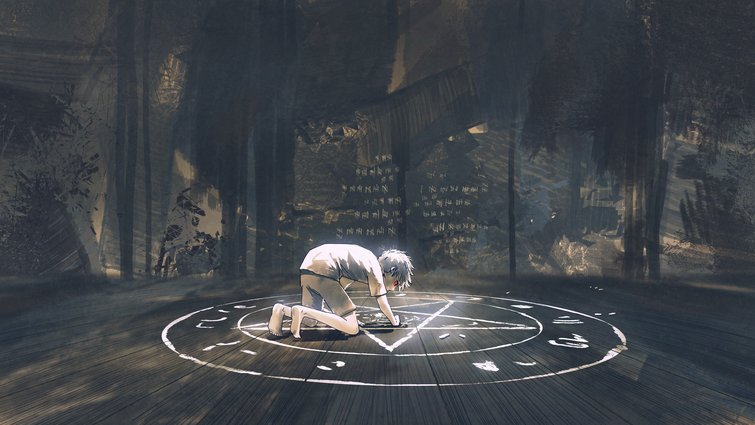
Revise, Revise, Revise — A Writer’s Guide to Practical Editing
Finishing your screenplay is only the first step—the real work is in the revisions. Here’s how to get started.
We’ve all seen this advice before. Virtually every website, blog, or script service out there tells you that once you finish your script, you have to go through the revision process—over and over. Some screenwriting web experts tell you to expect apocalyptically many revisions, like Sisyphus pushing his stone up the hill. Some projects will definitely take you a solid decade—or longer—but not all of them, not if you follow some solid editing approaches.
But, if you’ve never edited a script before (or have never edited one successfully), what does “revision” even mean. Fixing typos? Re-writing dialogue? Changing the ending?
Yes.
Here’s our best advice on polishing your script, one practical step at a time.
Listen to Your Script

Revising or editing a script actually means many different things. At its most obvious, it means making changes that make your story flow better, your dialogue sound better, and your characters . . . well . . . be better. A more complex definition would be trimming the beginnings and ending of scenes (we’ll get to that).
Determining what to change in a revision is a process based on several sources of information about your script. Gathering and applying this information makes up the different types of revision. Think of these types like filters—each is capable of trapping a specific pollutant and, taken together, you cover all the pollutants.
So, here’s your first revision: listen to your script. We don’t mean that metaphorically—actually listen to your script. Spoken language and written language are two different linguistic systems. They have a lot of overlap, but they also have a lot of idiosyncrasies. Life doesn’t usually happen the way we write it, with nuanced and layered syntax, soaring metaphors, and surgically precise punctuation. That means, you need to bring this script into the real world and teach it how to be, sorta like My Fair Lady.
The first way to listen to it is to simply read it, out loud, to yourself. If you think that’s weird, then you can con one of your friends into sitting and listening to it, but it’ll be kinda strange—and boring. As you read, listen to the cadence of your script’s voice. Is it convincing? Is it interesting? Beyond the actual lines of dialogue themselves, you still have to communicate this story to a film crew, and that’s what all those extra words in the script are for.
You’ll hear things that sound cumbersome and awkward, which is great! Your revision is working. Once you’ve made your way through the entire script, start over. Only this time, convince someone else to read it to you, and really listen to it like a stranger. You’ll be surprised what you hear.
Arrive Late, Leave Early

We’ve talked about this before, but one of the things you’ll be listening for is the execution of your scenes. Are they boring? Do they last too long? Is there information in there that we don’t need? A common phrase you’ll hear is “arrive late, leave early.” While screenplays aren’t exactly dinner parties, this is still solid advice.
When you’re revising the pacing of your scenes, you probably introduced them too soon, and you probably held onto them too long. This is natural—we all do it. We can be extremely precious about the information we feel is relevant to a scene. But, when we do this, we usually end up not trusting our audience. That irritates them, and it’ll kick them right out of the story. Have you ever been watching something, and the filmmakers go to great pains to remind you about something you already picked up? It’s irritating to be talked down to.
So, rather than dawdling around the scene, remove as much from the beginning as you can, and get right to the action. When you’ve finished the scene the way you like, get us the heck out of there!
Meaningful Glances

This is another principle that we also encourage at the drafting stage: the art of worldbuilding using “meaningful glances.” However, you can apply it just as easily during revisions.
Essentially, this is about how you spend your audience’s attention. You can think of it like cash—each film has a specific amount, and you can burn it on boring exposition, lengthy conversations, or info-dumps. But, once you’ve burned it all, you’re bankrupt, and the show’s over.
One way to save some of this attention is to be sly about how you establish your world. Every story takes place somewhere, somewhen, and to a degree, the audience needs instructing. Worldbuilding means defining the physics, the realities, the very rules of your narrative world.
Maybe magic is real in your story. Cool. Maybe this magic is powered by blood. Every spell requires a sacrifice. Those are the rules, so if your story doesn’t adhere to them consistently, you’ve betrayed the audience’s trust, and they’ll probably never forgive you.
Instead of burning attention by writing a block of dialogue that explains how this system works, show me a wizard schlepping a bucket of blood around the scene. The elements of a world functioning according to its own rules are there in your story—just take the time to slyly show your audience what’s going on, and why.
Keep Moving

This is one of the most straightforward revision filters. Movement. Move your characters as soon as you can, and often. Speaking is only one aspect of how we communicate. Where we go, what we do, whom we do it with—these are all kinetic elements that an outside observer can use to determine what’s going on.
When used judiciously, stillness and silence can be powerful storytelling tools. But don’t rely on them too often. Make them the exception, not the norm.
Setups and Payoffs

You’ve probably read before that your primary characters need to undergo some changes over the course of your story. There’s nothing too complex about this idea. Characters who remain flat and unchanged defeat the purpose of having watched the movie in the first place. We come for the drama and conflict inherent in change. We meet a character, something changes for them, the character has to resolve this, and they go on about their lives different for the experience.
Simple enough. Not all of your characters have to change—most of them probably won’t. Static characters are fine as narrative elements that help maneuver your main characters into the situations that will challenge them. But, your primary characters definitely need to take us through an experience. One of the easiest ways to do this, and save space in your screenplay, is the setup-and-payoff.
The idea is pretty simple. Early in your script, we’ll see something. It could be an item, an event, anything—some small detail that’s interesting enough to notice, but not so glaring that it takes over our attention. Later, this setup will resolve as a payoff, tying off the loose end.
It’s a way of showing your audience that there’s something of a contract going on. You promise to show some change and drama and conflict, and you promise to equip them with the story elements they need to properly piece the before and after together—so they can experience the change in the character themselves.
In Your Dreams

This is another straightforward revision filter. Be careful with altered states of reality.
It isn’t that you can’t use dreams, visions, drug trips, or other mind-bending states of reality in your story; it’s just that you have to carefully align these things with the rules of your worldbuilding. Taken at face value, dreams and drug trips don’t mean anything. In the real world, they’re not a universally recognized way to derive information.
People have been interpreting dreams for millennia, but we still haven’t figured them out. So, if, in your world, dreams are a simple and straightforward way for the character to communicate or prognosticate the future, you need to make sure the audience knows that this convention is unique to your narrative world.
If your character is able to dream things into reality, make it clear that this is weird. Bring the audience into the question of “Why are they able to do this?” You can answer this question as a setup and payoff—just make sure it actually pays off. If the reason your character can dream things into reality is because they’re a nice person, that’s not enough. You’re going to disappoint a lot of people waiting for a good payoff.
Finally, Formatting

This is commonly what we think of when revising a script—correcting grammar and formatting things. It’s definitely part of the process, but we include it last here because it doesn’t deserve the pole position.
Yes, you’ll need to polish your language and bring the script into a format that other filmmakers and producers recognize. (Grab a few of these, and you’ll be all set.) However, a grammatically correct and perfectly formatted script doesn’t guarantee anything, especially if the story is flawed.
Get the script down, on paper, however you can. It’s okay if it isn’t any good—just get it down. Then, spend some time with each of these revision filters and start knocking things off the script. Think about the story in these contexts, and it’ll start to revise itself. Ideas will come to you, and you can refine them before working them into your story. When that story has attained final form, check your grammar and your formatting.
And then, conquer the screenwriting world. Easy peasy.
Need a few more resources for your next project—or current one? We’ve got you covered:
- FREE Video Overlays and Templates for Video Editors and Filmmakers
- Classic Cinema Cameras at Bargain Basement Prices
- Breaking News: DJI’s New Ronin 4D All-in-One Camera/Gimbal
- Up That Scare Factor: 8 Ways to Build Tension in a Scene
- Halloween Tutorial Roundup: Your Horror Film Survival Kit
Cover image via Tithi Luadthong.





